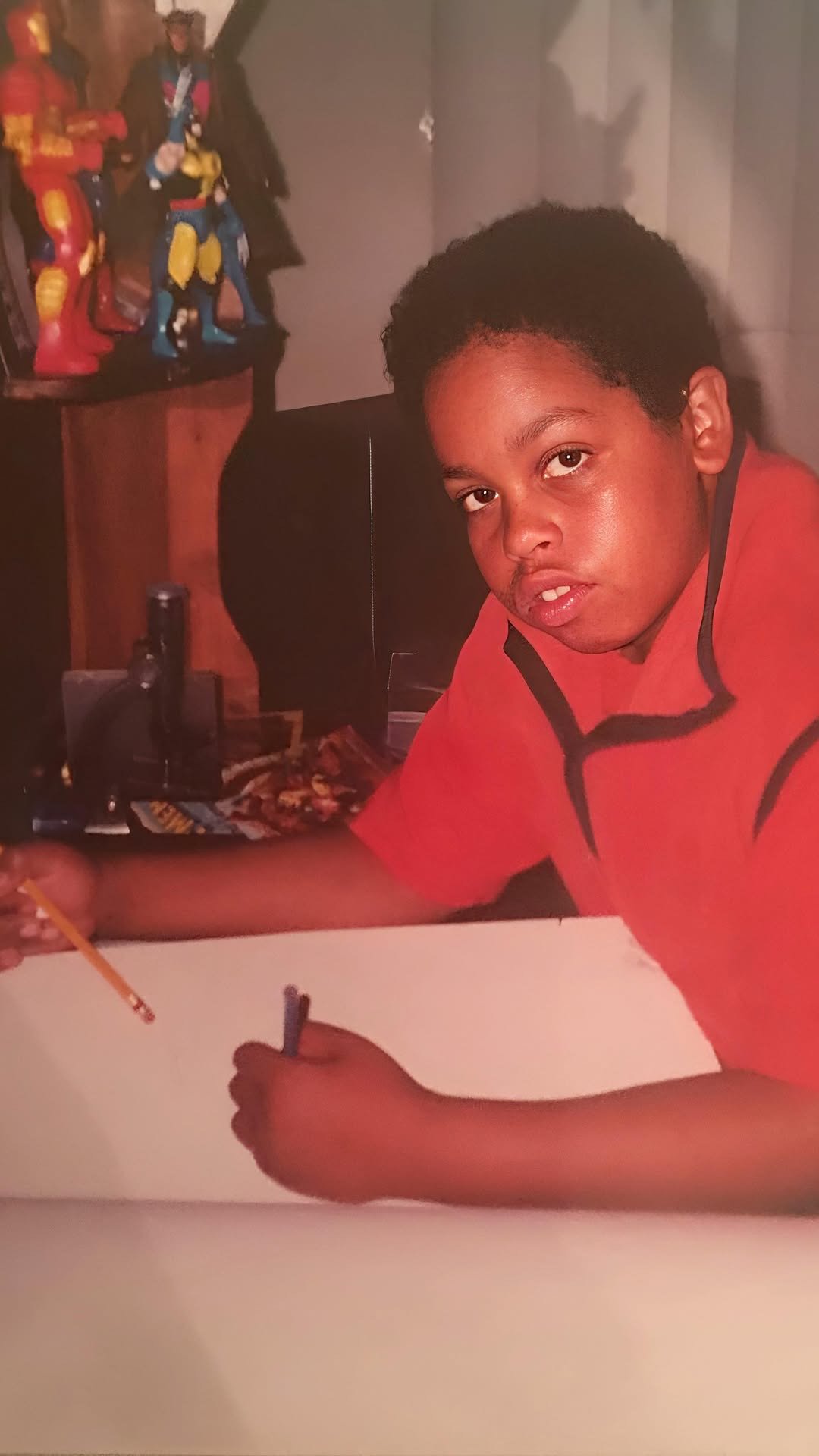Earth Isn’t Ready for What Heaven Sent
“Art is service to God. If it’s for yourself, it might be catchy—but it’s meaningless.”
There are artists, and then there is David Sabastian. Not just a creator, but a vessel—one who doesn’t chase applause or virality, but builds for something bigger than the algorithm could ever reach. In conversation, this artist doesn’t just speak; David Sabastian delivers. Each word is intentional, each idea sharpened by lived experience and spiritual truth.
This isn’t a brand built for consumption. It’s a transmission. A wake-up call. A revolt in slow motion.
June 30th . Written by Ryan PackerOrigins: Childhood as Portal
“I didn’t become an artist. I’ve always been one.”
Raised in a home shaped by his mother’s classical records and spiritual energy, David Sabastian spent childhood skating, painting, drawing, and diving deep into imagination. The world outside was noisy—so this artist created a world within.
From early on, creation wasn’t optional. It was a pulse. “Thriller on vinyl, Anita Baker, Stevie Wonder,” David recalled. “I thought I might become a comic book artist.” It didn’t matter what the medium was—only that something was being made.
Spiritual Activation & Self-Mastery
The shift toward spiritual clarity began with a video sent by a close friend: How to Use Your Imagination by Neville Goddard. That piece didn’t just inspire—it rewired everything.
Imagination became a muscle. And more than that, it became a tool.
“To master life, you have to master your mind. Everything external is just a reflection of your internal,” David shared. That’s not a quote—it’s a philosophy. A daily one.
We Are God: A Statement, Not a Metaphor
For David Sabastian, “We Are God” isn’t poetry. It’s fact.
“God is the wall I’m looking at. The air I’m breathing. The phone I’m speaking into.”
David grew up with traditional images of religion—white robes, judgment, fire—but never felt aligned with them. “We were taught that God was a white man in the sky, and the devil was a red man with a stick underground. But that was never real.”
What’s real is consciousness. Vibrations. The interconnected nature of all existence. “You are me. I am you. I’m Jesus. I’m the homeless man on the corner. We’re all having a simultaneous experience.”
Skid Row Fashion Week: Fashion as Resistance
Skid Row Fashion Week isn’t a clothing brand—it’s a spiritual and cultural offering.
“I didn’t make it to sell T-shirts. I made it because I care about the people who have nothing.”For him, the unhoused aren’t outcasts—they’re some of the most soulful and free spirits on Earth. This project isn’t about raising awareness—it’s about putting intention into physical form. He’s past the point of trying to be understood.“I don’t need people to get it. I just create what I feel called to create.”
Creative Flow Without Force
He rejects the idea of creative blocks. “Creative walls don’t exist. That’s just a narrative we build in our heads.”
If flow disappears, it’s a sign to go live life again. “I’ll leave the studio, go do something new. Then come back with something to say.”
Resistance isn’t failure—it’s a signal. Sometimes creativity just needs breath, not pressure.
Industry Independence & Cultural Decline
Independence wasn’t a choice—it was a necessity. “The industry forced me to carve my own lane. It’s broken.”
When speaking on the current state of culture, especially within Black communities, he’s blunt: “We’re devolving. We stopped creating from love. Everything’s about money now.”
To him, real art is sacred service. When created only for capital gain, it loses its divine purpose. “You can make a hit. You can make noise. But it’ll be empty.”
Symbols, Power & Sacred Evolution
In David Sabastian’s visual work, symbols are deconstructed and rebuilt. But the goal isn’t to shock—it’s to evolve.
“Symbols change. The Nazi symbol once meant peace in Hinduism. Everything shifts over time.”The intention isn’t to rewrite the past, but to participate in the ongoing evolution of meaning. The work isn’t about rewriting the narrative. It’s about refusing to repeat it blindly.
The Youth, The Culture, and the Mirror
He sees the youth as both the future and the mirror.“The youth a decade ago got us here. The youth today will take us wherever we’re headed next.”And yet, he sees a troubling trend: “There’s brilliance, but there’s also a lot of greed. The focus has shifted from expression to validation.”
The mainstream rewards destruction over healing—and he’s not convinced that will change anytime soon. “There’s a reason why murder is marketed. Why misogyny is profitable. Why ignorance is propagated. It’s not by accident.”
A Message That Still Drives Him
Despite the chaos, he remains rooted in purpose.“There’s still too many people walking around in fear. Controlled by invisible hands. Manipulated by things they can’t see but feel every day.”
His drive isn’t attention—it’s obligation. An internal call to fulfill what he was created to do.“My job is to be what I was supposed to be. That’s it. If I do that fully—maybe I’ll leave this world a little better than it was when I got here.”
Final Thoughts
This artist doesn’t chase recognition. He doesn’t care if you get it. His mission isn’t to be seen—it’s to be true. And in a time of filtered realities and performative culture, that kind of clarity hits different.
Some artists entertain.
Some provoke.
This one awakens.



